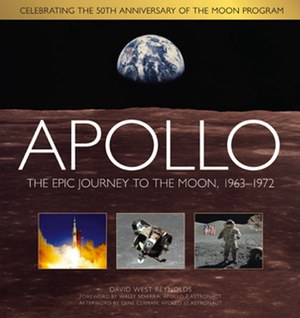Review: Apollo: The Epic Journey to the Moon, 1963–1972by Jeff Foust
|
| There’s a good balance of text and images throughout the book, although it’s all familiar ground for people who have read previous histories of Apollo. |
It’s that anniversary that is the springboard for Apollo: The Epic Journey to the Moon, 1963–1972, a book about the program by David West Reynolds, as a banner on the book’s cover reminds us. Reynolds first wrote this book in 2002 (see “Review: do we need another book about Apollo?”, The Space Review, June 16, 2003); this book is largely a reprinting, with little signs of updates or new material from that earlier edition. The 2013 version, like the 2002 version, includes a forward by Wally Schirra, with no mention of the fact that Schirra passed away in 2007.
For those who haven’t read the 2002 version, Apollo: The Epic Journey to the Moon, 1963–1972 provides a well-illustrated overview of Apollo, from the prehistory of dreams of lunar voyages through the start of the Space Age and on into Apollo itself, wrapping up, briefly, with Skylab and Apollo-Soyuz. There’s a good balance of text and images throughout the book, although it’s all familiar ground for people who have read previous histories of Apollo.
There’s little evidence of new material in this version of the book, beyond a brief reference to, and image of, NASA’s Curiosity Mars rover in an introductory essay by Von Hardesty of the National Air and Space Museum. There’s no discussion, for example, of the most serious effort by NASA in the post-Apollo era to return humans to the Moon: the Vision for Space Exploration, which rose and fell between the two editions of the book. Apollo, Reynolds writes in the book’s conclusion, created “a legacy so overwhelming that it remains incompletely assimilated today.” Those words were true in 2002, and appear to remain true today.
